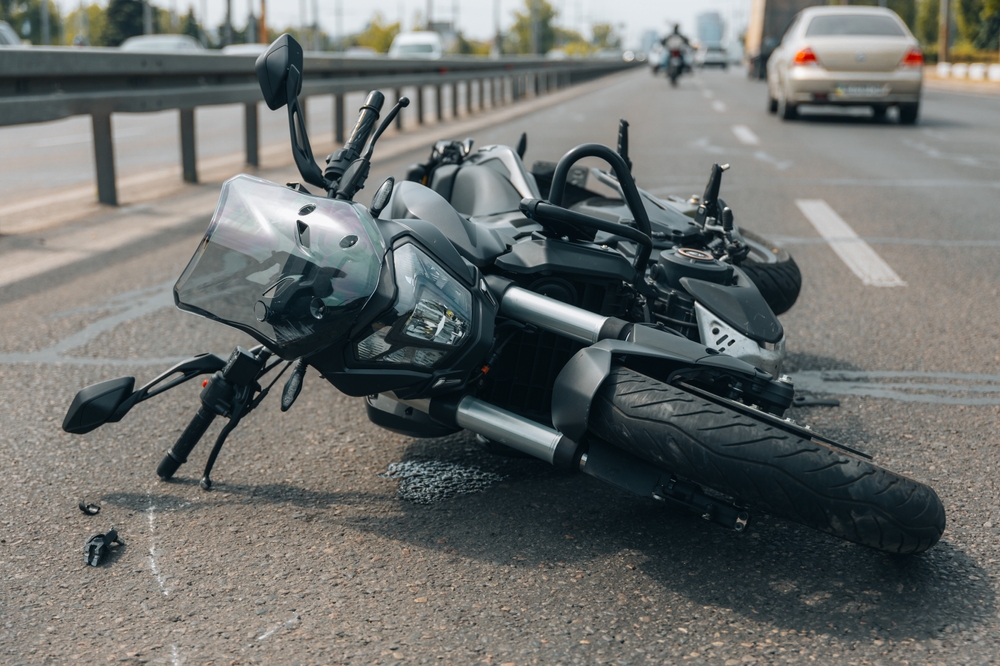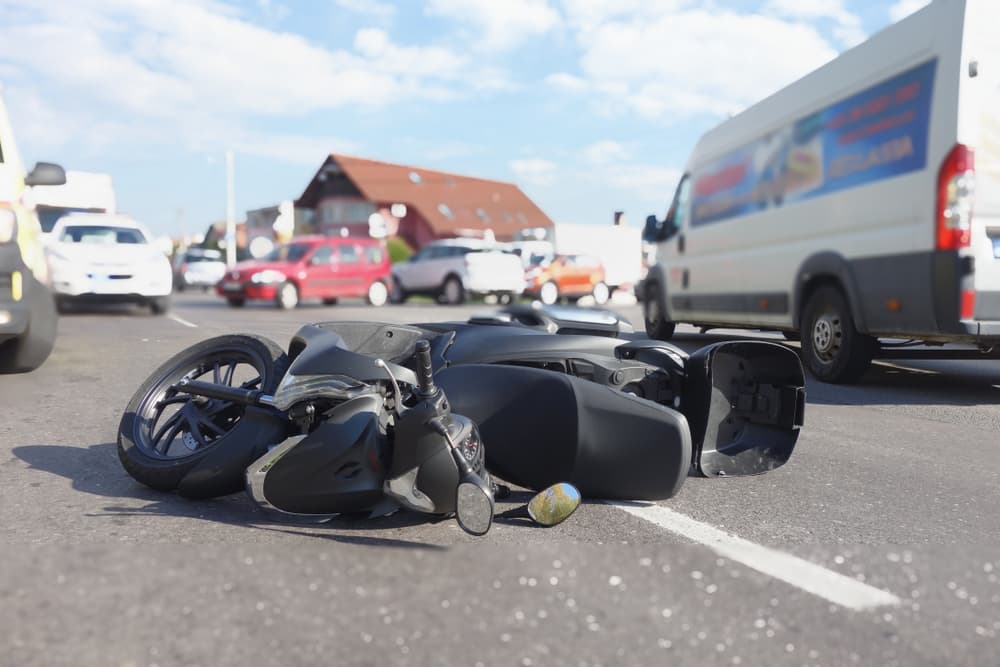Steven A. Bagen | February 7, 2025 | Motorcycle accident

Motorcyclists constantly deal with unfair assumptions. People blame them for crashes without knowing the facts. You’ve likely heard it before – claims that riders take unnecessary risks, weave through traffic, or go too fast.
Those statements ignore reality. The truth is that most motorcycle accidents happen because of negligent drivers who fail to pay attention.
If you’ve suffered an injury in a crash, you need a motorcycle accident lawyer who understands how reckless drivers put motorcyclists in danger every day. You shouldn’t have to fight an uphill battle to prove a driver’s mistakes, but insurance companies will do everything possible to deny responsibility. You deserve justice.
Drivers Fail to See Motorcycles Until It’s Too Late
After nearly every motorcycle accident, you hear the same tired excuse: “I didn’t see them.” That statement comes out so often it’s practically rehearsed. Drivers don’t pay attention to motorcycles because they aren’t looking for them. Their eyes scan for larger vehicles – cars, SUVs, and trucks – but motorcycles don’t register in their minds. That doesn’t mean riders aren’t visible. It means drivers aren’t paying attention.
Drivers often claim that motorcycles “came out of nowhere,” but the reality is that they simply didn’t take the time to check their surroundings. A motorcycle isn’t invisible. It moves within the same traffic patterns as any other vehicle. When a driver fails to look, fails to check blind spots, or fails to anticipate that a motorcyclist could be present, they create a situation where an accident is inevitable.
Failing to see a motorcycle doesn’t absolve a driver of responsibility. If someone makes a turn, changes lanes, or pulls out without looking, they’re at fault. Motorcyclists have the same right to the road as everyone else, but drivers sometimes act like bikes are an afterthought. A motorcycle accident attorney understands that and will work to hold a reckless driver accountable.
Left-turn Accidents Are One of the Biggest Dangers to Motorcyclists

Left-turn collisions happen because drivers don’t take the time to judge a motorcycle’s speed or distance accurately. A driver waiting to turn sees an opening in traffic and assumes they have enough time to cross. However, motorcycles are smaller than cars, and drivers frequently miscalculate their speed. That mistake can be deadly.
Left-turn crashes happen everywhere – at intersections, in parking lots, and even on quiet neighborhood streets. A driver eager to make a turn rushes their decision and ignores the fact that a motorcyclist has the right of way. The law is clear: when a driver turns across another vehicle’s path, they’re responsible for the crash. However, insurance companies will try to argue that the motorcyclist was at fault. A motorcycle accident lawyer knows how to fight back against these false claims.
Horrible Consequences
Too often, drivers make left turns without waiting for a safe traffic gap. They’re in a hurry and assume they can cross before an approaching motorcycle reaches the intersection. They fail to recognize that motorcycles can cover distance quickly, and their smaller profile makes it harder to judge how fast they’re moving.
This miscalculation leads to devastating consequences. When a car cuts across a motorcycle’s path, the rider has little time to react, often leading to head-on or side-impact collisions that result in catastrophic injuries.
Drivers Carelessly Cut Off Motorcyclists
Unsafe lane changes are another major reason why motorcycle crashes happen. A driver may glance in their mirror, but failing to check their blind spot can have catastrophic results. Motorcycles are smaller than cars, which means they can be harder to spot – but that doesn’t excuse reckless driving.
When a driver suddenly merges into a motorcyclist’s lane, the rider has few options. Swerving may not be possible, and braking too hard can send them flying over the handlebars. A slight bump from a car can cause a motorcyclist to lose control, leading to devastating injuries. Drivers have a responsibility to check their surroundings. Failing to do so is negligence.
Even when motorcyclists try to stay visible by riding with their lights on, wearing bright gear, or positioning themselves strategically in traffic, they’re still at risk. Some drivers change lanes impulsively, assuming no one is in the next lane without making the proper visual checks. Others believe they can bully smaller vehicles out of their way. This reckless attitude creates deadly situations for riders simply trying to reach their destination safely.
Following Too Closely Puts Motorcyclists at Risk
Tailgating is dangerous for all road users but especially deadly for motorcyclists. A motorcycle can stop faster than a car, which means a driver who follows too closely may not have time to react. A rear-end collision between two cars is usually minor. When a car rear-ends a motorcycle, the results are far worse.
A motorcyclist hit from behind may be thrown forward, landing on the pavement, or in the path of oncoming traffic. The impact can cause serious injuries, including broken bones, head injury, and internal damage. Drivers are responsible for leaving a safe following distance, but too many ignore this rule. A motorcycle accident attorney will make sure a careless driver is held accountable.
Some drivers believe that motorcycles don’t require as much space as cars, so they follow dangerously close, unaware that the lack of a metal frame and airbags makes even a minor rear-end collision deadly. Others tailgate out of aggression, trying to pressure the motorcyclist to speed up or move out of the way. No matter the excuse, tailgating a motorcyclist is reckless and irresponsible.
Motorcycle Bias – Why it Exists and How a Skilled Attorney Can Defeat it in Your Case
Motorcyclists face unique challenges on the road in terms of safety and when seeking compensation after an accident. A significant obstacle they encounter is motorcycle bias – preconceived notions and stereotypes that unfairly paint riders as reckless or irresponsible.
These biases exist among insurance adjusters, law enforcement, jurors, and even the general public, making it harder for motorcyclists to obtain fair compensation after an accident that wasn’t their fault. However, a skilled lawyer who understands motorcycle law can effectively counter these biases and ensure a fair outcome.
Understanding Motorcycle Bias
Motorcycle bias is rooted in several misconceptions that stem from cultural portrayals and real-world driving behaviors. Some of the most common biases include:
- Motorcyclists are reckless: Many people assume that motorcycle riders take unnecessary risks, speed excessively, and weave through traffic carelessly. While some riders may engage in reckless behavior, the vast majority ride safely and follow traffic laws.
- Motorcycles are inherently dangerous: The perception that motorcycles are dangerous often leads to the assumption that motorcyclists knowingly put themselves at risk and are, therefore, partially responsible for their injuries, even when another driver is clearly at fault.
- Motorcyclists are hard to see: While motorcycles are smaller than cars and trucks, this doesn’t absolve other drivers from their responsibility to be aware of them on the road. Despite this, some people believe that if a driver didn’t see a motorcycle, the rider must have been riding recklessly or in a blind spot.
- Motorcyclists are nonconformists: Pop culture has contributed to an image of motorcyclists as rebellious or lawless, thanks to decades of films and TV shows that portray riders as part of outlaw biker gangs. This can create an unconscious bias that leads people to assume motorcyclists disregard the rules of the road.
These biases make it harder for a motorcyclist to prove fault in an accident case. Insurance companies may use these prejudices to devalue claims, and jurors may be more inclined to believe that the motorcyclist contributed to their own injuries.
How Motorcycle Bias Affects Accident Claims
Motorcycle bias can significantly impact the legal process, from dealing with insurance companies to presenting a case in court. Some of the ways it manifests include:
- Blaming the rider: Even when a motorcyclist follows all traffic laws, the opposing party may argue that they were speeding or engaging in reckless behavior.
- Lowball settlement offers: Insurance companies may offer unfairly low settlements, betting the rider will accept it rather than fight against ingrained biases.
- Challenges in jury trials: If a case goes to trial, jurors with negative biases about motorcyclists may be less sympathetic to the injured rider’s claim, making it harder to secure full compensation.
- Difficulty proving liability: The bias that motorcycles are inherently dangerous can lead to the false assumption that the rider contributed to the accident, even when the other driver was entirely at fault.
How a Skilled Lawyer Can Overcome Motorcycle Bias

A skilled motorcycle accident lawyer understands these challenges and how to combat them effectively.
Overcoming motorcycle bias requires a strategic legal approach, combining evidence, expert testimony, and strong legal arguments. A seasoned lawyer will implement several tactics to ensure their client receives the compensation they deserve.
Gathering Strong Evidence
One of the most critical steps in overcoming bias is gathering strong evidence. Since bias can influence how an accident is perceived, solid evidence is essential in proving liability. A motorcycle accident lawyer will obtain traffic camera footage and dashcam videos to show how the accident occurred.
In addition, they’ll collect police reports and challenge any biased language or unfounded assumptions. Witness interviews provide unbiased accounts of the accident, while accident reconstruction experts can demonstrate that the motorcyclist was not at fault.
Challenging Insurance Company Tactics
Insurance adjusters often try to exploit motorcycle bias to reduce or deny claims. A skilled lawyer will anticipate and counter these tactics by presenting clear, factual evidence that refutes any claims of reckless riding. Demonstrating the rider’s history of safe riding through clean driving records or motorcycle safety course certifications can further support the case.
If insurance companies attempt to offer a lowball settlement, the lawyer will negotiate aggressively and, if necessary, take the case to trial to ensure fair compensation.
Educating the Jury
Educating the jury about motorcycle bias is crucial if the case goes to trial. Many jurors may have preconceived notions about motorcyclists, affecting their judgment. A motorcycle accident lawyer will explain common misconceptions and why they are inaccurate.
An attorney can reshape the narrative by presenting statistical evidence that most motorcycle accidents are caused by other drivers failing to yield or recognize motorcyclists. Expert testimony from accident reconstructionists, medical professionals, and motorcycle safety instructors can provide an unbiased perspective reinforcing the motorcyclist’s right to compensation.
Demonstrating the Rider’s Responsibility and Safety Practices
Another effective way to counter bias is to demonstrate the rider’s responsibility and safety practices. A lawyer may present evidence, such as helmet and protective gear use, proving that the rider took appropriate safety measures. A history of following traffic laws and defensive riding techniques will further emphasize the motorcyclist’s responsible behavior.
In addition, testimony from riding instructors or motorcycle safety experts can confirm that the rider’s actions were responsible and within legal guidelines.
Leveraging Legal Precedents
Experienced motorcycle accident lawyers reference previous case law to strengthen a personal injury claim. By showing how courts have ruled in similar cases, they can demonstrate that bias shouldn’t influence the verdict. Establishing a pattern of fair legal treatment in past cases can help reinforce the motorcyclist’s right to full compensation.
Using Visual Aids and Technology
Visual aids and technology can effectively present the facts of the case in an engaging and clear manner. Juries and insurance adjusters respond well to visual storytelling, and lawyers can use tools such as 3D accident reconstructions to illustrate exactly how the crash occurred.
If available, helmet cam footage can provide the motorcyclist’s perspective and show that they were riding responsibly. Diagrams and charts explaining an accident’s mechanics can help debunk myths about motorcycle accidents and make the case more compelling.
The Right Lawyer Makes All the Difference
You shouldn’t have to face the burden of medical bills, lost income, and long-term physical and emotional suffering on your own. The person who caused the crash should be held accountable. Schedule a free case review with a personal injury attorney to fight for the compensation you deserve and ensure that negligent drivers don’t get away with harming motorcyclists.
